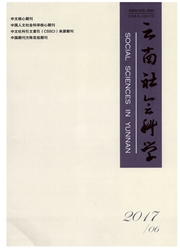

 中文摘要:
中文摘要:
清水江中下游苗族村寨留存的近十万份苗族契约中存在丰富的苗汉语互借的文字记载,尤其是“汉字记苗音”地名的苗汉语互借现象非常突出,这些现象反映了从清初到民国近300年的时间段里汉语和苗语互借情况,也导致苗语地名的历史渊源和隐涵的文化背景出现“失语”。本文对平鳌、文斗2个苗族村寨大量契约中“汉字记苗音”地名的苗汉语互借现象进行分析研究,探索“汉字记苗音”地名的类型及规律,以探明苗汉语互借的机制和缘由。
 英文摘要:
英文摘要:
In the tens of thousands of Hmong Contracts in the Hmong villages in the middle and lower rea- ches of the Qingshui River area in Guizhou, the inter - borrowing method was widely used for Hmong - Chinese writing, especially the way of using the Chinese - characters to record Hmong - sounds in the documents. This reflected the inter - borrowing of the Han and the Hmong languages in writing during the 300 years from the be- ginning of the Qing Dynasty to the Republic of China. It also resulted in the "wrong expression" in the Hmong historical origin of toponym and cultural setting. The present paper conducted an analysis of the inter - borrowing method for the names of different places "with the Chinese characters for the sounds of Hmong places" recorded in the large number of documents found in two Hmong villages - Ping' ao and Wendou, with the purposes of find- ing out the types and regulations of this kind of borrowing and then to ascertain the methods and reason of the in- ter- borrowing in the Hmon~- Chinese language.
 同期刊论文项目
同期刊论文项目
 同项目期刊论文
同项目期刊论文
 期刊信息
期刊信息
